As a technique Guilloché has been mostly relegated to the realm of watch dials, with Allen Elishewitz's knives as the notable exception. It is the sort of technique that was born during the enlightenment, wherein the number, grouping and depth of cams and bumps on a series of wheels can create fantastic patterns engraved into metal.
A late 18th Century rose engine for doing guilloche work, this engraving comes from Denis Diderot's Encyclopedia.
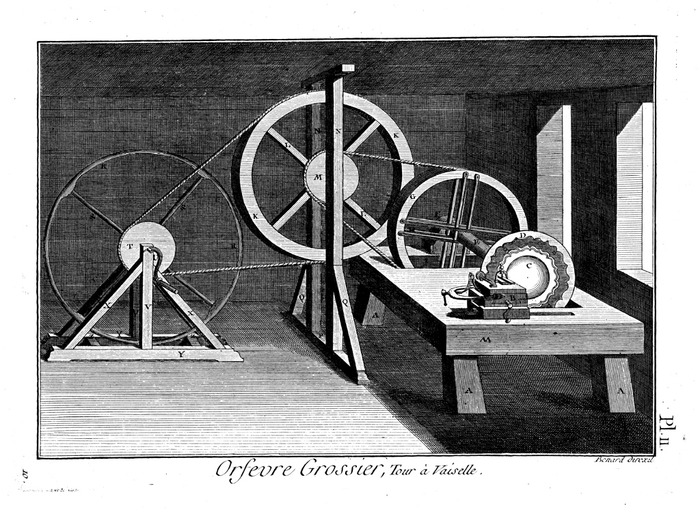 (From)
(From)
Louis the 16th practiced as a hobby using this lathe, now in the Conservatoire des Arts et Metiers, in Paris. In this picture, the large steel wheels at center are th cams that determine the pattern; the piece to be cut would be attached to the brass disk at the right of the machine, and the machine would be turned, by hand, from the left via crank
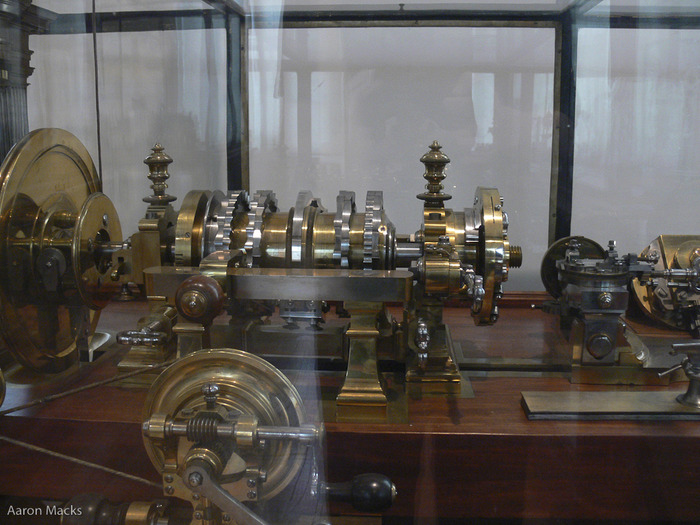 (Picture is mine, 2008)
(Picture is mine, 2008)
In recent years there have been some examples of the technique in jewelry, but mostly in watch companies trying to expand their ranges. Guinel, on the other hand, has no history in the watch industry, so their designs can be free of that baggage.
For a first piece they have a 18k gold pendent, with a band of diamonds. The engraved pattern is a rather simple one, a series of circles, each offset from the previous one, progressing around a circle. If these were done evenly, it would create a barley-corn pattern, but skipping every few causes a more interesting pattern to emerge
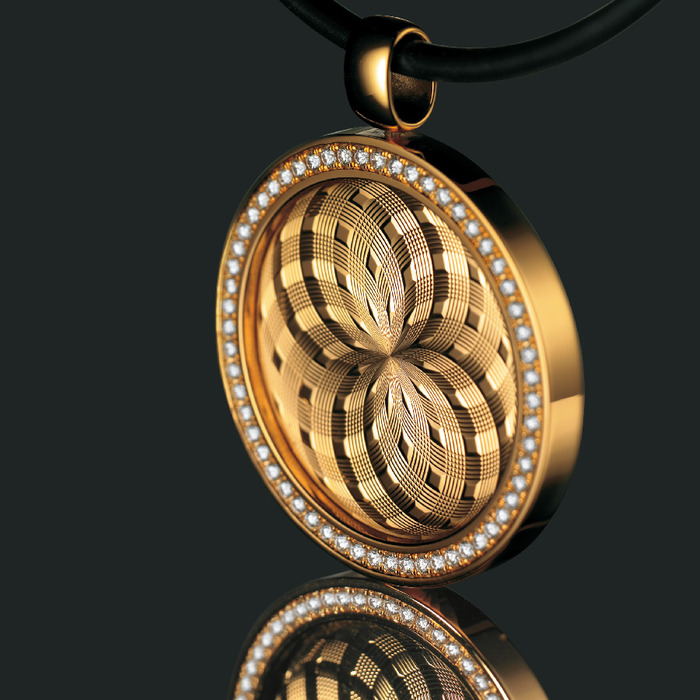
This next piece is from their Solitaire collection, a single diamond set in white gold. The side of the ring is decorated with a pattern called Soleil courbe (curve of the sun). I quite like the design, but could do without the brand name written in large letters around the outisde of the ring.
Finally a piece with the engraving in mother of pearl, one of the most difficult materials to engrave due to irregularities in the layers and overall brittleness. This piece is from their Helicie collection.
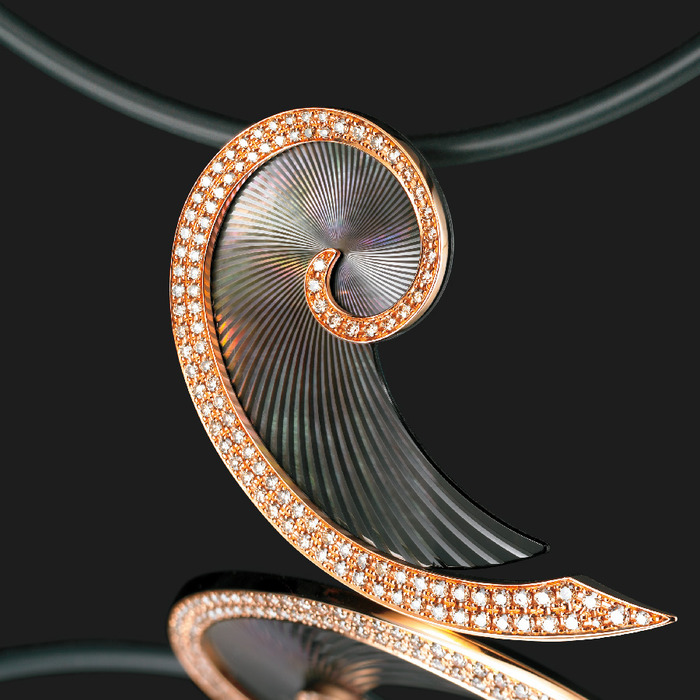
Jewelry photos from Paris Joaillerie
A



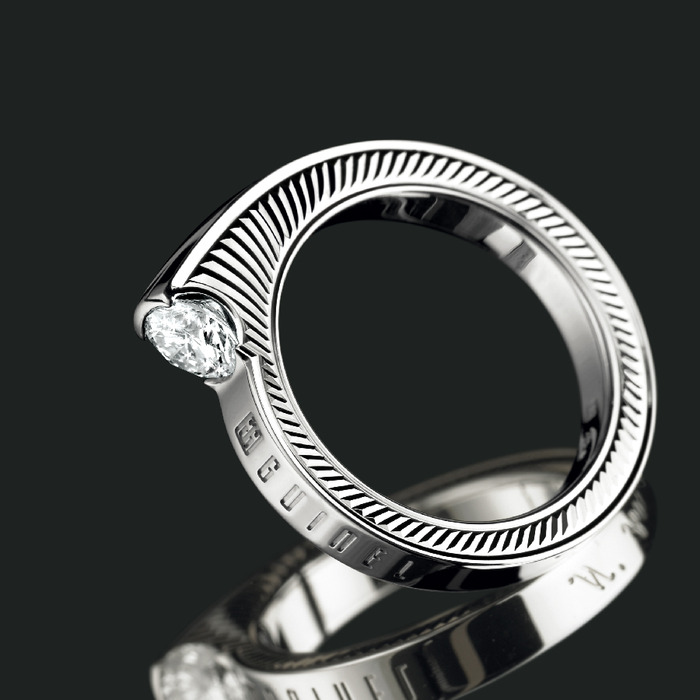
Oh, those are just beautiful. (Especially the last.)